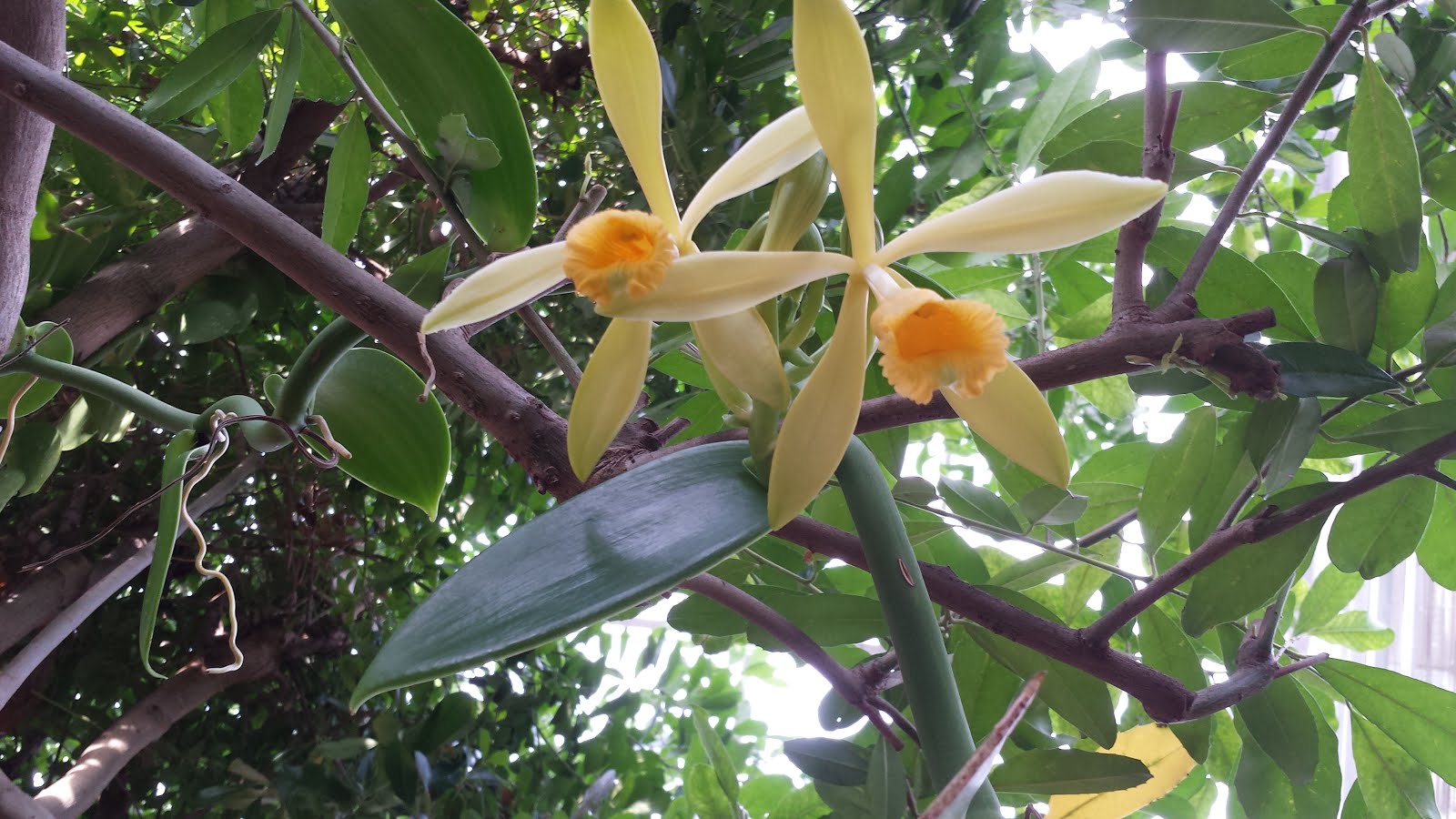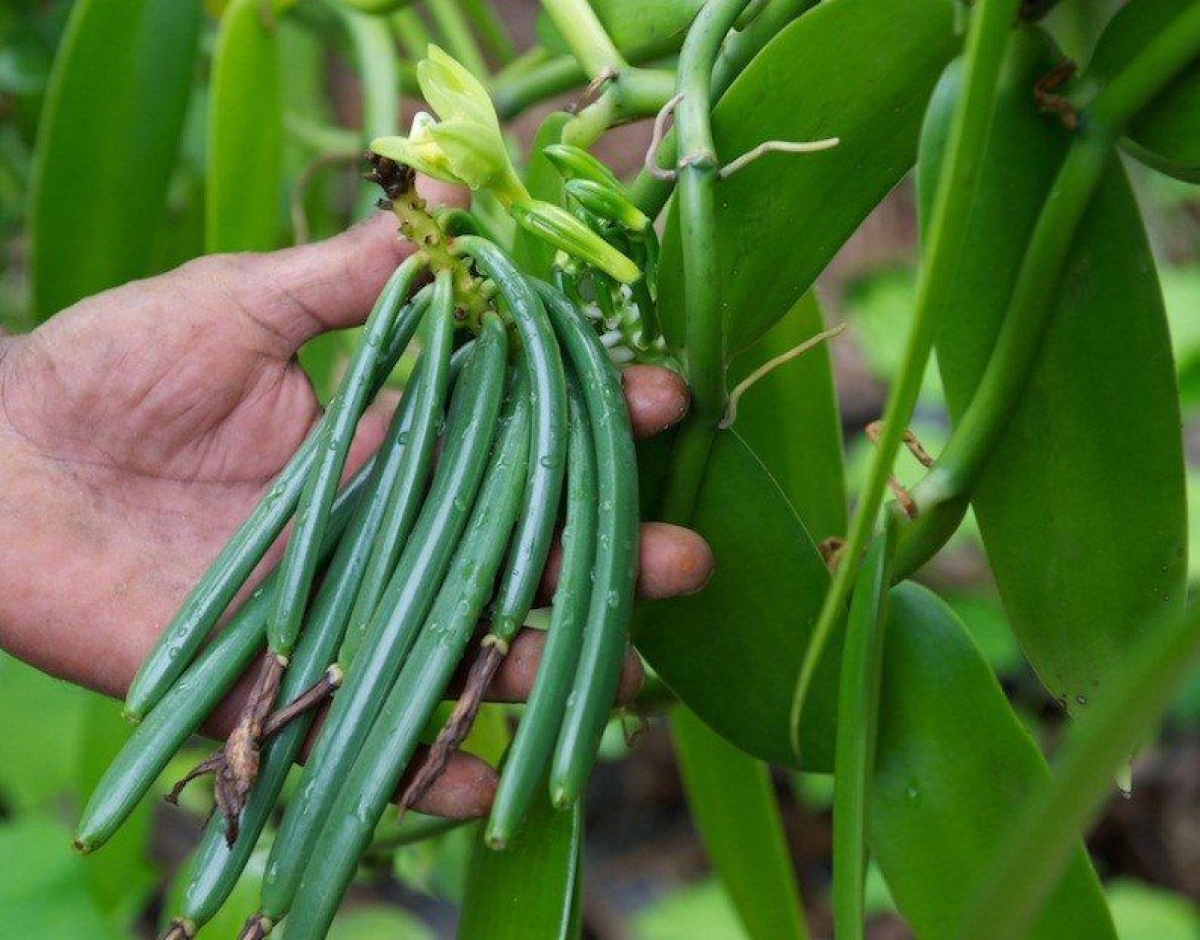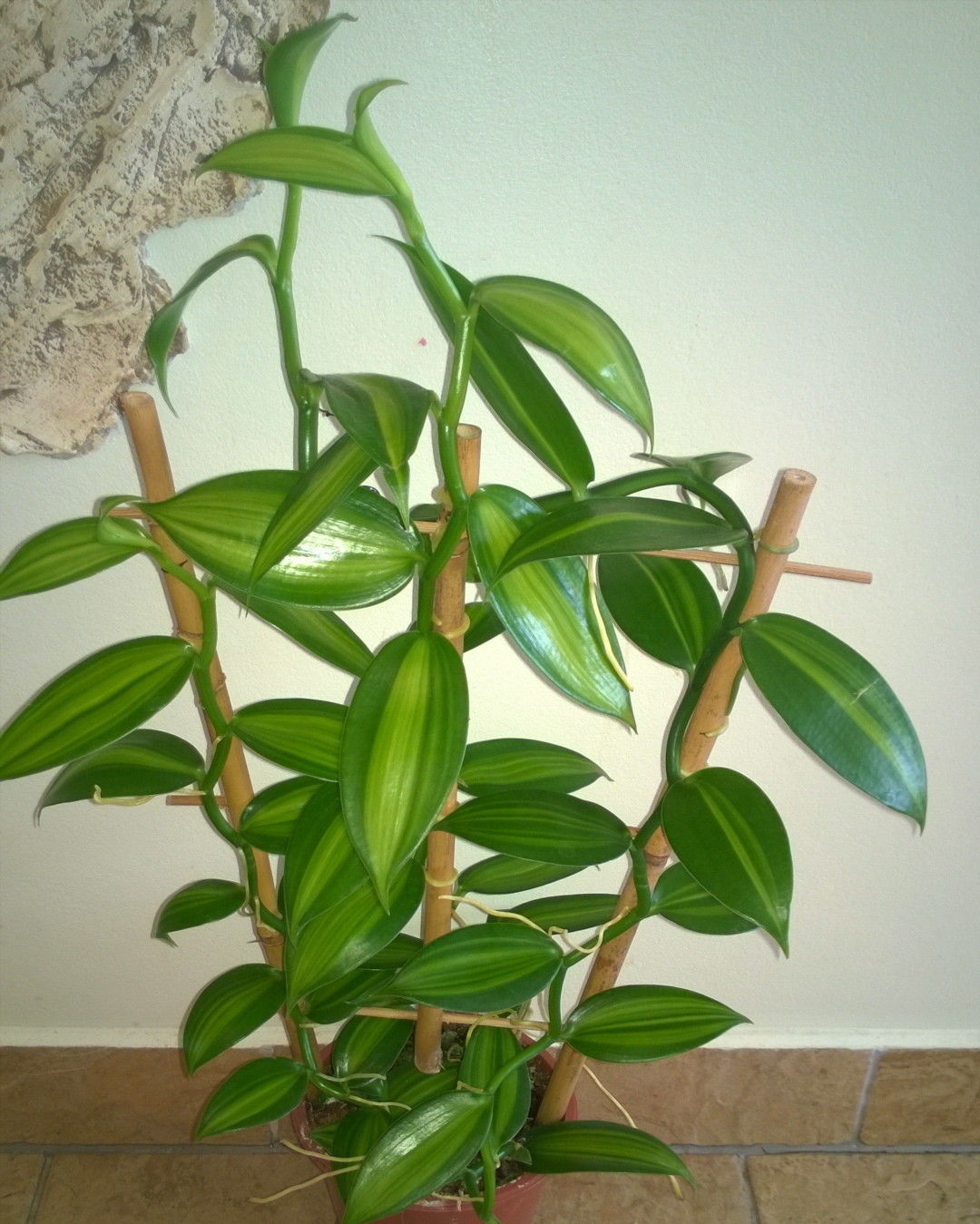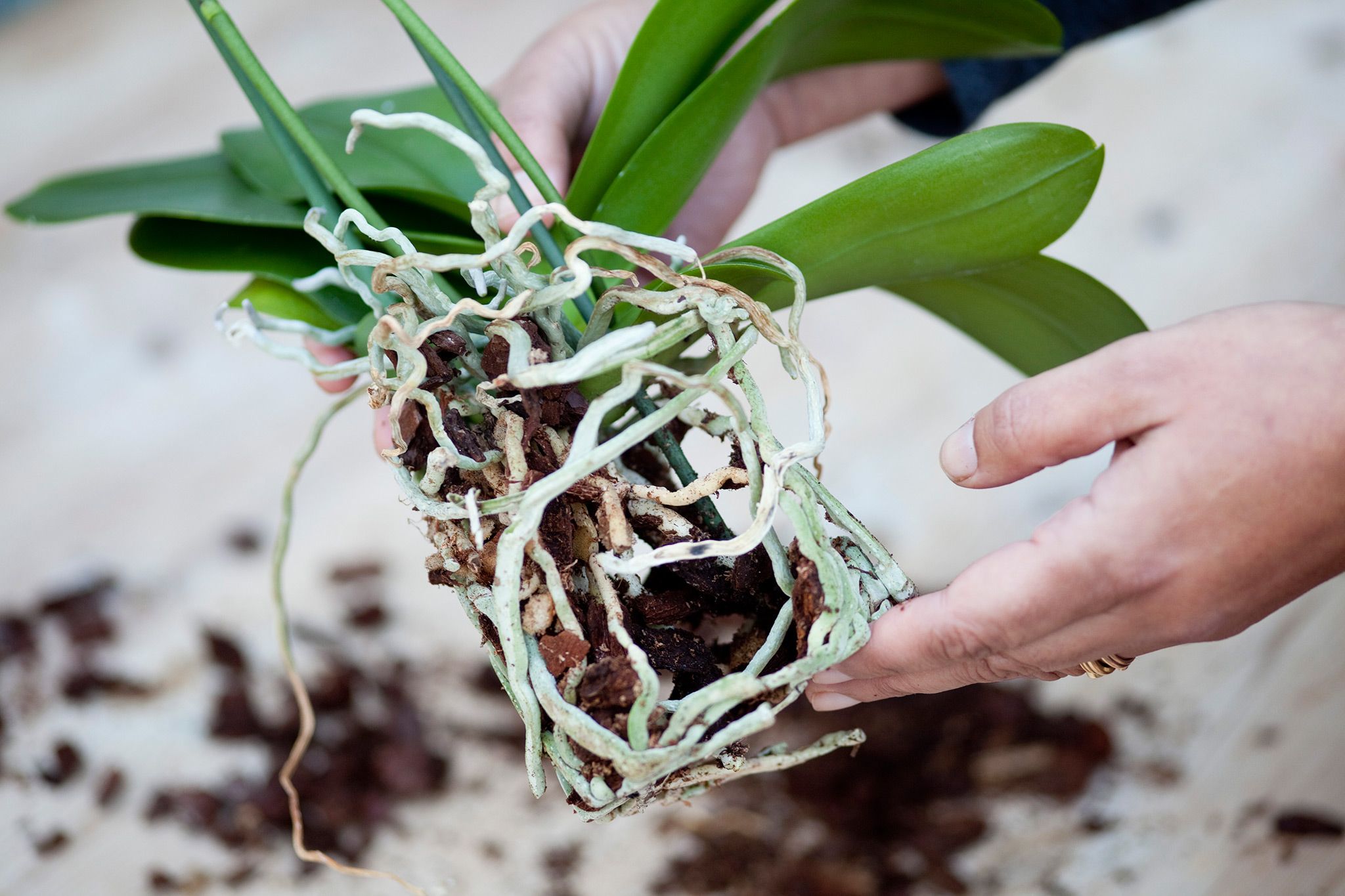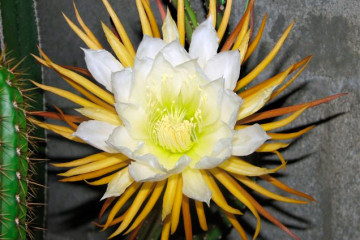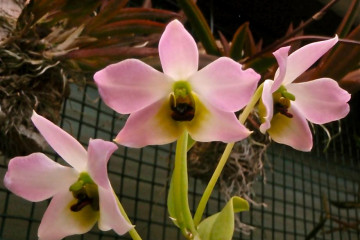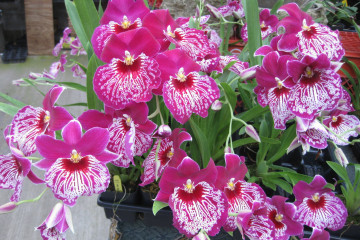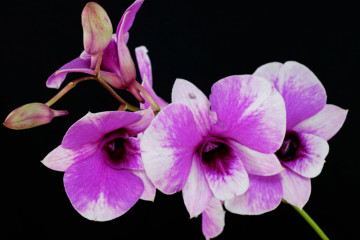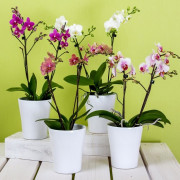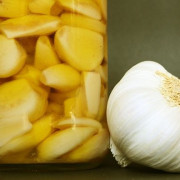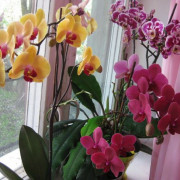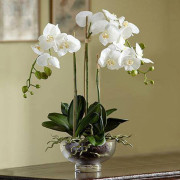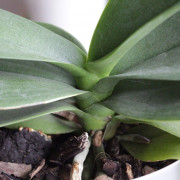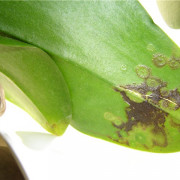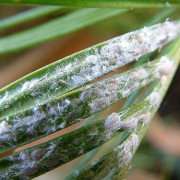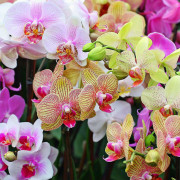Vanilla Orchid: the main types and options for home care
Content:
Vanilla Orchid is the only Orchid variety that bears fruit. It belongs to lianas, during growth its stems twist, growing up to 30 m in length. In native tropical conditions, it grows on trees, the shoots of the plant intertwine with each other, thereby providing themselves with support. It is characterized by elongated dark green leaves. Aerial roots are formed along the entire stem, which additionally fix the flower on the tree trunk, cliffs. Peduncles are large lime or lemon color. Flowers open during the day, which are pollinated by bees or hummingbirds.
The main subspecies of Vanilla orchids
There are more than one hundred subspecies of Vanilla Orchid. Of these, about 20 are bred at home.
Vanilla variegated
Vanilla Planifolia Variegata is a plant with long stems that form a large number of aerial roots. The variegated orchid is characterized by oblong-epileptic succulent leaves, ring-shaped lemon flowers of irregular shape. They have five petals, the sixth forms a lip. Inside there is one stamen and a pistil, which makes pollination difficult. Only a special species of tropical butterflies can cope with this task, therefore they often resort to artificial pollination. The fruit is a cylindrical triangular shape, 10 to 30 cm long.
Vanilla flat-leaved
The homeland of Vanilla flat-leaved is the West Indies, but today it is found in the tropics of Florida, Central America and in the north of South America. It is characterized by elliptical oblong or ovoid leaves. The inflorescence has up to 6 flowers of green-white and yellow-green hues. It blooms in late spring and early summer.
Other types
Several descriptions of the species of representatives of the Vanilla Orchid:
- Vanilla Pompona is naturally grown only in Mexico, Costa Rica and Panama. Feels best at an altitude of 270-300 m above sea level. It does not belong to edible species, therefore it is not used in cooking. Vanilla Pompona pods are only used to make vanilla extract of not very good quality;
- Vanilla Planifolia is known in narrow circles as Vanilla Bourbon. This is one of the most common types. Homeland is Central America;
- Vanilla Planifolia is a cross between Vanilla Planifolia and Vanilla Pompona. Known as Vanilla Tahiti. Until now, there are disputes among breeders about the origin of this species: it was artificially or accidentally bred. It is considered by many to be a subspecies of Vanilla Pompona. But this species is classified as inedible, while Tahiti is actively used in cooking.
Plant care at home
Vanilla orchid is a climbing plant. Its shoots grow long, so you need to take care of it even at the planting stage. In order to properly form the plant and prevent the stems from breaking, you need to think about the support for them: use a special pipe with a coconut coating, stands for decorative flowers or pots. In addition, caring for the Vanilla orchid at home consists of observing a few more rules.
Temperature and humidity
Vanilla is a thermophilic orchid. Feels comfortable when the room temperature is 28-29 ° С during the daytime, and at night from 20 ° С to 23 ° С. The main task of flower growers is to take care of the stability of indicators, and avoidance of sudden changes. Although an adult flower is able to withstand temperature changes within 3-4 degrees.
To ensure the necessary parameters, you need to spray water near the plant, place a flower pot on a pallet with moistened expanded clay.
Watering
Vanilla Orchid requires systematic watering. Do not allow the top soil in the pot to dry out. To moisturize it, use purified and warm water that does not contain calcium.
A weekly warm shower has a positive effect on the development and condition of the flower. Sometimes flower growers irrigate by immersing the container in water. After the flowering period ends and the plant goes into a dormant state, you need to reduce the frequency of watering. But be sure to make sure that the soil does not dry out.
Soil and fertilizing
Vanilla Orchid takes top dressing well, so they must be carried out every 2-3 weeks. For this purpose, use special fertilizers developed for orchids. Throughout the year, the concentration of introduced substances changes depending on the stage of flower development. Such data are indicated in the instructions on the packaging of the purchased product.
Lighting
Vanilla from the Orchid family is a fairly light-loving plant, but does not tolerate direct sunlight. It is necessary to install a flower in the house in a place where diffused light will be provided throughout the day. During the winter period of the year, the duration of daylight is reduced, so it is replenished with artificial light.
Transfer
Over time, the soil in the pot becomes impoverished, and there are not enough nutrients in it for the plant, its roots do not fit in the container. Therefore, from time to time it is recommended to transplant Vanilla into a new pot. This usually happens once every three years. The favorable period for this procedure is spring.
To begin with, the plant is very carefully removed from the old container, preventing damage to the root system. If such a nuisance occurs, then with a new planting, the breaks are sprinkled with charcoal. This will prevent rotting. Next, the plant is placed in a container slightly larger than the previous pot and covered with soil.
Reproduction
Reproduction of the Vanilla orchid at home is carried out by cuttings. To grow a new specimen, you will need stem segments containing at least three nodes of aerial roots.
After the treatment, the cutting is placed in a pot with moistened soil. Sand is often used instead.Then they provide a greenhouse effect by covering the container with polyethylene. It is impossible to leave the greenhouse for a long time in such conditions. The plant needs air access, so from time to time the film is removed. As soon as the spine appears, the pot is opened completely.
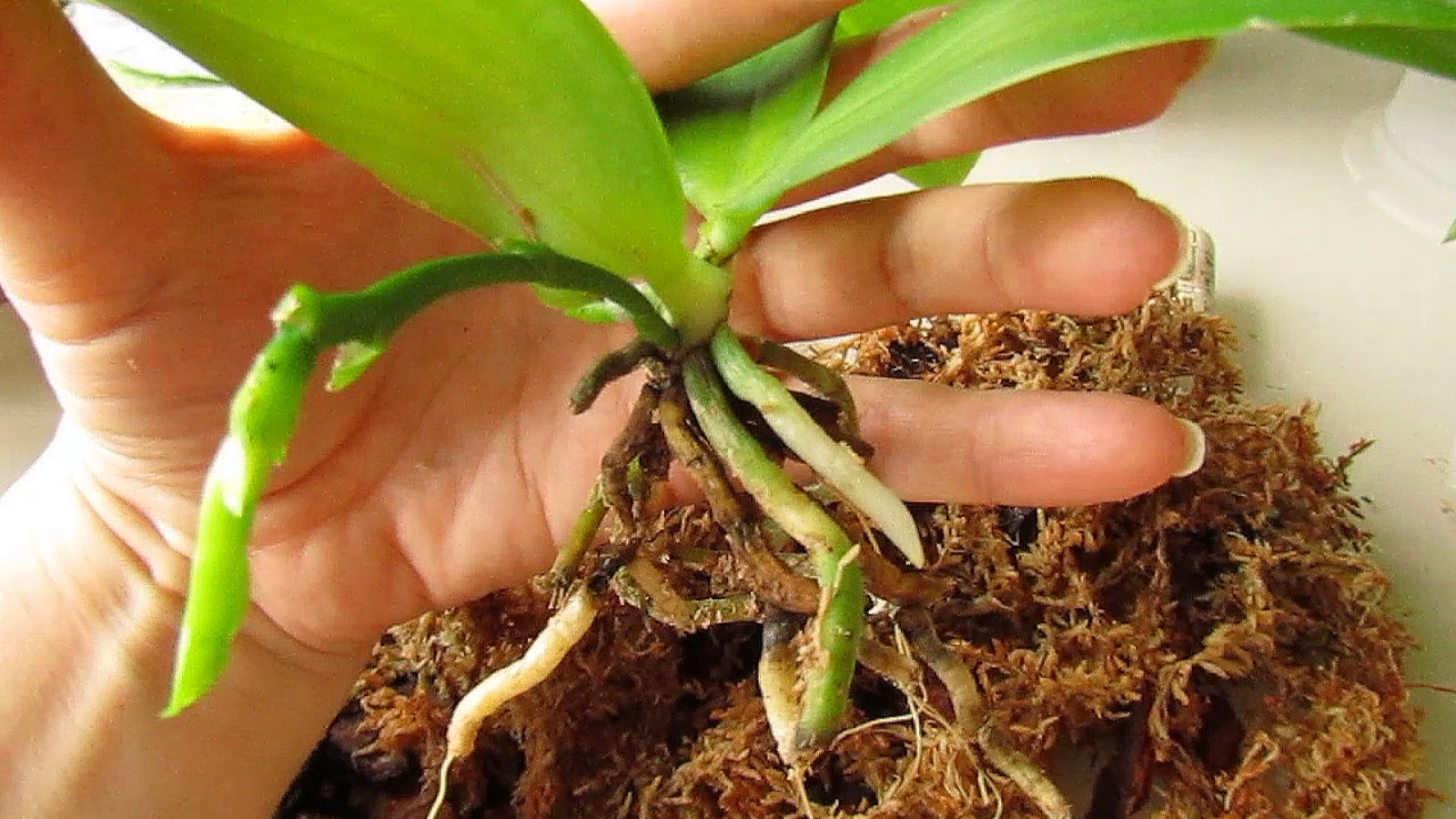
After the cutting has taken root and three young leaves have appeared, it is planted in the substrate
After a while, leaves will begin to appear on the handle. As soon as 2-3 young leaves grow, the shoot is planted in the substrate as an independent plant. A pot for this purpose is chosen transparent, small in size, but with a sufficient number of drainage holes. In addition, a support is immediately installed for the flower stems of the corresponding size.
Thus, Vanilla Orchid is a real exotic in Russian apartments. Having planted it once, the florist will not stop and buy all the varieties of the variety. The flower is really unusual, beautiful, smells good, and besides, it also bears fruit.
